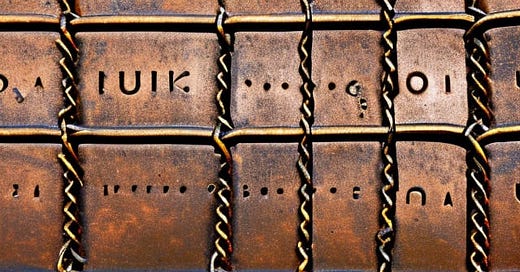The no longer missing link
We found the link! Entry 4 of a crypto poet's guide to the metaverse.
As I started this journey into the metaverse, I did have some understanding of blockchains. This is an important part of the puzzle, and if you are thinking of joining us on web3, you really should understand why blockchain is so promising.
In the last entry in this travelogue posing as a guide, I told you about the different marketplaces. They are all operating on a blockchain. There are many different blockchains, each with its own specificities, but the basics are the same:
all transactions are recorded in a publicly accessible recording system
nobody is solely responsible for this recording system, everybody is.
On the public record
Now, what does that mean. Let's start with number two. The first principle of blockchains is their public nature. The recordkeeping is maintained by a whole network of people and organisations, and there is not one, or a small group, that has total control of this. This means a couple of important things. First of all: it's hard to break the recordingkeeping, because it's distributed over many stakeholders. If you break or steal one, the whole system can easily be rebuilt from all the copies. Secondly, because there is not one single owner, nor even a small group, anybody can play along. There is no gatekeeper. The promise of this is often captured in the slogan "banking for the ubanked" or something of that spirit. In other words: it will give access to financial systems to those who are normally not able to access. This can be challenging, but also can it be a blessing. Imagine a poor artist from a low income country who does not have access to a bank, but now can sell art in the international market without restriction. That's a positive.
The provenance problem
If we look a bit closer at the recordkeeping, we see that because each transaction is recorded, suddenly digital art is less easy to copy. If I can create a piece of digital art. You can copy that, without anybody being able to see the difference. However, if I put that piece of art in a blockchain, now there is a public record of it. I can prove provenance. And, if we use it all right, I can even bake royalties into it. So that if I sell my art to you, and you sell it for a profit to another person, I receive part of your profit. Automatically. For artists and creators, this is a game changer. It is like finding the missing link between analogue and digital art.
Tl;dr
Blockchains allow artists to safely sell digital(ized) art to anybody in the world.
What came before
This is the fourth entry in this travelogue-posing-as-guidebook. To read earlier entries, visit the section A crypto poet’s guide to the metaverse.
A cryptopoet to read more of…
Katie Dozier breathes poetry. Even when she travels (and you can check that on Twitter if you wish), she’s trying to take in as much of poetic history as she can. This love for and deep knowledge of poetry translates into a drive to keep innovating, especially in the web3 arena. You can find proof of that in the poem How Lucky We Are In Web3, where she pushes the idea that poems have value and now poets can actually be compensated for adding that value to the world. What I also like very much, is her new and developing series of cryptoku. These are haiku in a new way. I like that idea. Very much. I went a different route to make haiku more personal to me by creating my own poetic form, but reinventing a form is maybe an even better way to show your respect for poetic history. Anyway, read the cryptoku, I especially liked the first one, Cryptoku #1. And don’t forget to collect an edition of one of these. It’s important. Show how you value it. #paythepoet.





So interesting, Arjan!